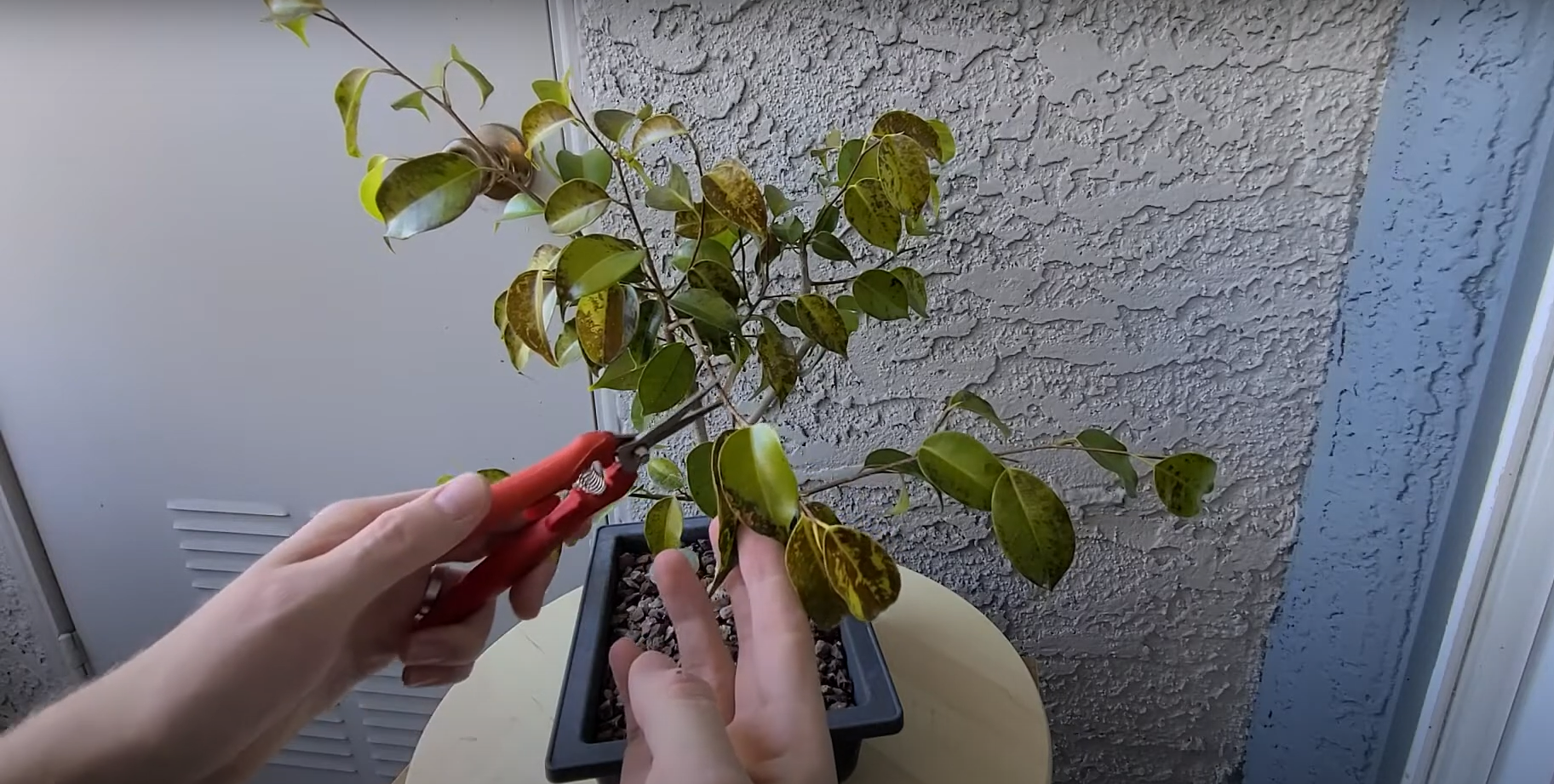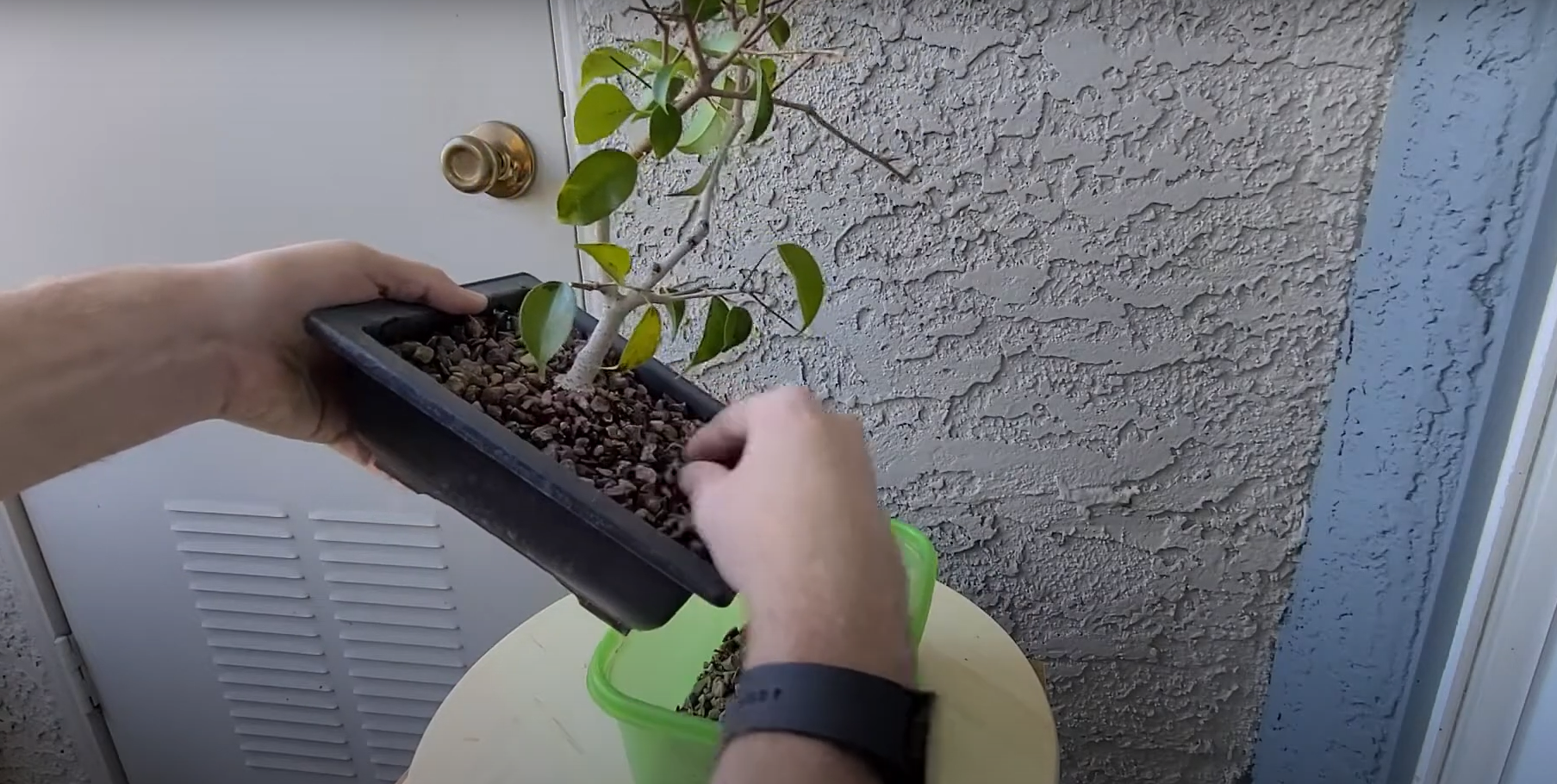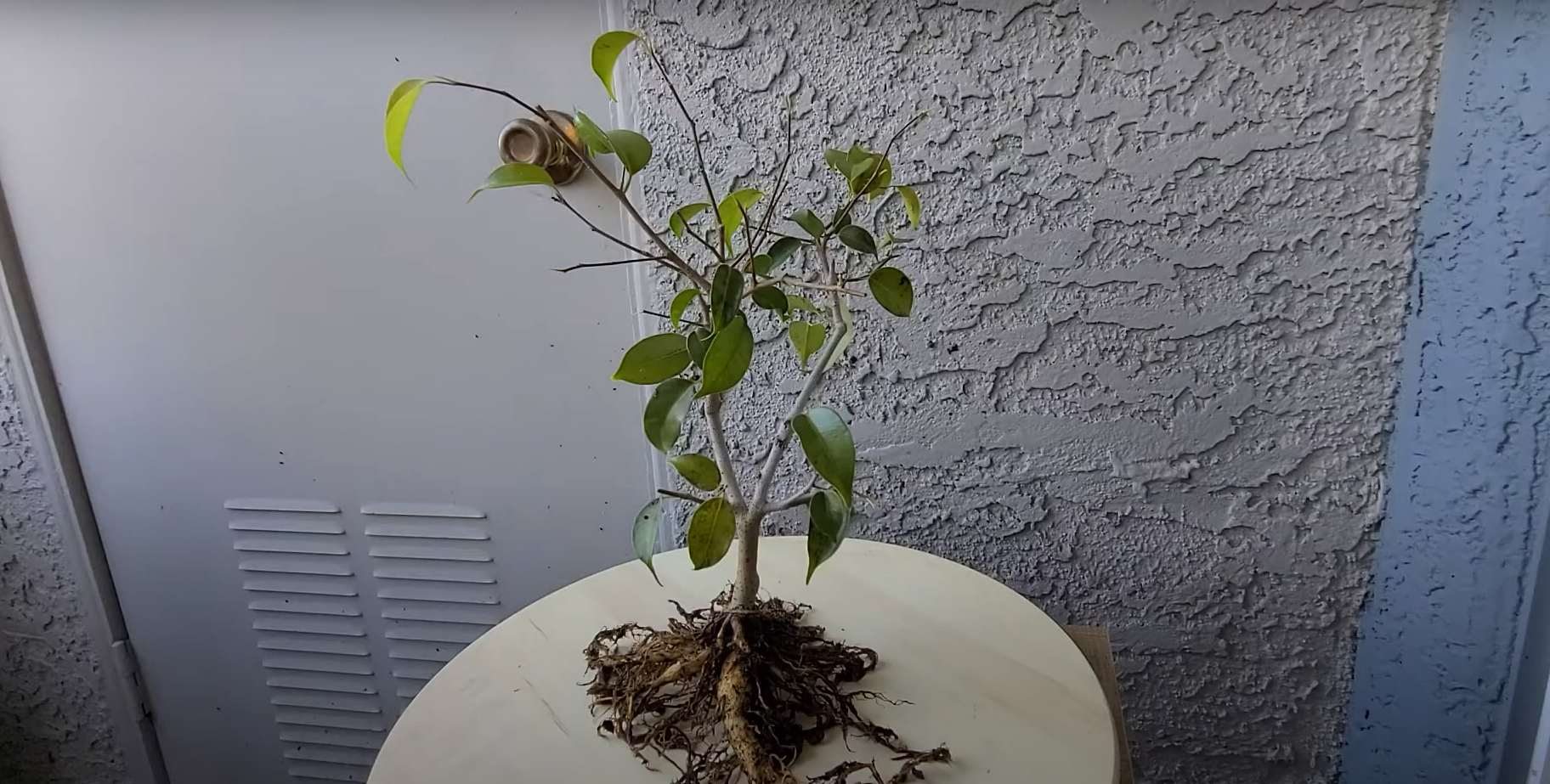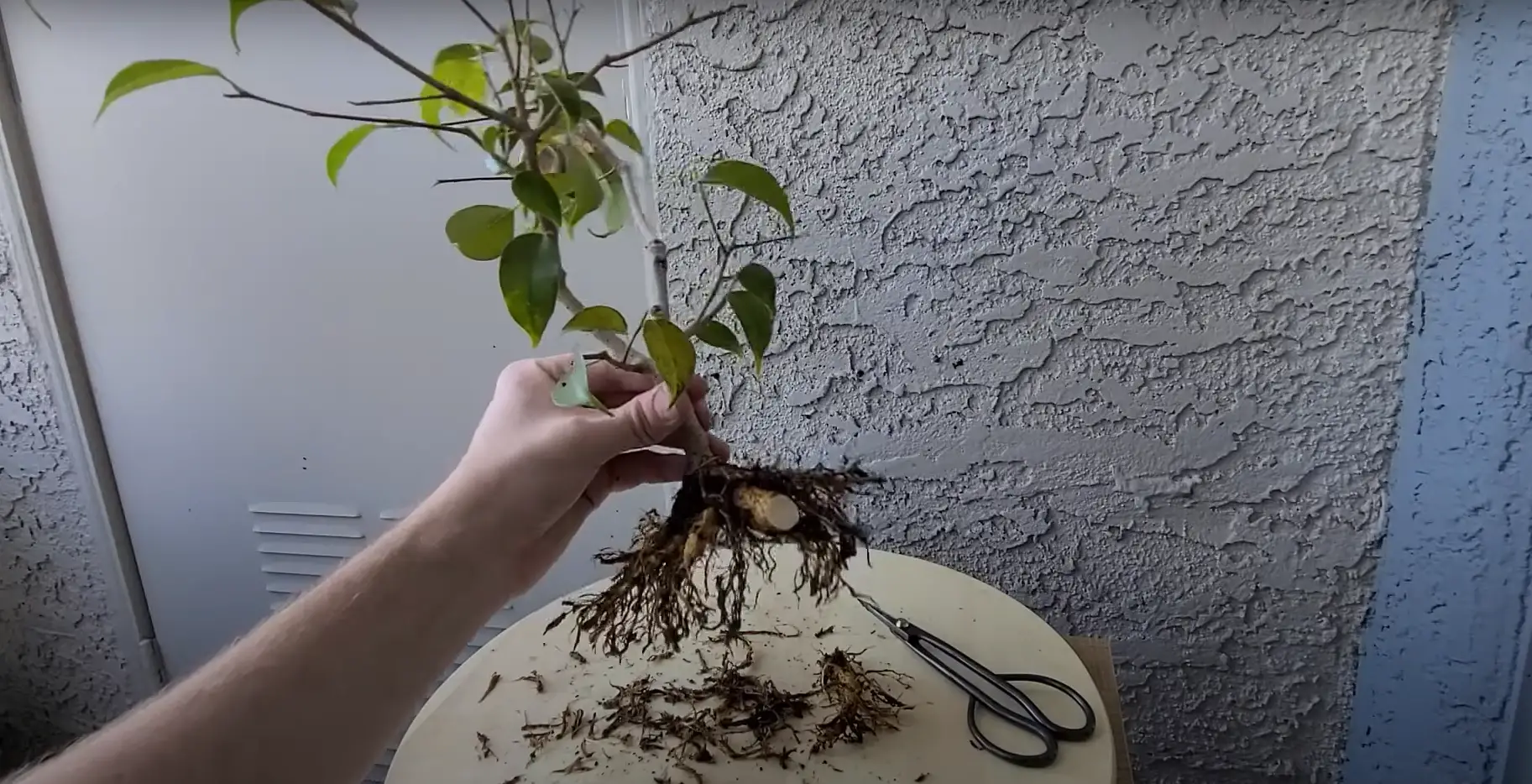Are you feeling overwhelmed as you watch your ficus tree slowly fade away? If so, don’t despair! There are many ways to revive a dying ficus tree. Reviving a struggling ficus is possible, but it requires diligence and patience. In this blog post, you will learn the fundamental steps to save a dying ficus tree. These include identifying what causes stress in plants, assisting the plant in adapting to an indoor environment, giving it enough sunlight and water, regularly fertilizing it, properly pruning it with sterile tools, and making sure that it has proper air circulation. Follow these steps for success in saving your beloved houseplant!
Can You Save a Dying Ficus Tree?
The answer is yes, it is possible to save a dying Ficus tree. Identifying the cause of the problem and taking corrective measures is crucial for achieving success. Here are some helpful tips for saving your ficus tree:
- Make sure that you are providing adequate light and moisture levels for your ficus tree. A lack of sunlight or too much water can be detrimental to its health. If you notice any yellow or browning leaves, this could indicate that your ficus isn’t getting enough sunlight or too much water. Move the plant closer to a window with bright indirect light if necessary or adjust how often you’re watering the plant. [1]
- Check for nutrient deficiencies in the soil. If your ficus isn’t getting enough of the necessary nutrients, it will be more likely to die. Test the soil regularly and fertilize the plant with a nutrient-rich fertilizer if needed.
- Prune away any dead or damaged branches and leaves to give your tree a fresh start and encourage new growth.
- Be vigilant for pests like aphids, mealybugs, scale insects, and spider mites that can harm the leaves and branches of a ficus tree. Immediately treat any infestations with an appropriate insecticide or natural remedy (such as neem oil).
- Lastly, make sure that you are not over-pruning or stressing your ficus tree. Give it plenty of time to rest and recover in between pruning sessions, as well as providing enough water and nutrients.

Essential Facts About Ficus Tree
Ficus trees are popular houseplants, often seen in lobbies and living rooms. With their glossy leaves and easy-care nature, they can be a wonderful addition to any home or office. But unfortunately, many ficus plants eventually fall victim to certain diseases that cause them to decline in health and vigor. To prevent this from happening to your own ficus tree, it is important to understand some of the essential facts about caring for these tropical plants.
In terms of fertilizer, a slow-release granular product is best. Ficus plants love organic matter like compost or worm castings and appreciate an occasional boost with a diluted liquid fertilizer once or twice per month. Finally, pruning is important to keep your ficus tree in shape—remove any dead branches or stems and keep it well trimmed in general. [2]
Signs of a Dying Ficus Tree
A dying Ficus tree can be a difficult and heartbreaking situation. Before you can begin to take action to save the tree, it’s important to identify whether or not your Ficus tree is actually dying. There are several signs that you should look out for which could indicate that your Ficus is in trouble.
- Wilting Leaves – A wilting Ficus tree will appear droopy and limp with leaves that hang down instead of standing up straight. This could be a sign of dehydration, insufficient sunlight, disease, root rot or over-watering.
- Brown Leaves – If your Ficus has brown leaves, this could indicate too much sun exposure or lack of enough water. It may also mean there is a pest infestation in the tree.
- Insect Infestations – Another sign of a dying Ficus tree is an insect infestation, which can be caused by a variety of pests such as aphids or mealybugs. These insects suck the sap and nutrients from the leaves causing them to die off prematurely.
- Lack of Growth – If your Ficus has stopped growing or is not producing enough new growth, this could indicate that it is unhealthy and may need special attention.

If you are noticing any of these signs, it’s important to take immediate action to save your Ficus tree before it’s too late. The following steps will help you get started on saving your beloved plant! [3]
Why Your Ficus Tree Is Dying
1. Change of environment or sudden large temperature changes
Moving a ficus tree from one location to another, especially if done suddenly and without adequate preparation, can shock the tree and stunt its growth. The same goes for drastic temperature changes—a warm spot during the day can turn cold overnight, causing your ficus tree to struggle to adjust.
2. Lighting issues
Ficus trees need bright, indirect sunlight to flourish. Without it, the leaves can turn yellow and fall off. If your ficus tree isn’t getting enough light, move it to a brighter spot or consider investing in artificial lighting.
3. Improper watering
Overwatering or underwatering can both lead to a dying ficus tree. To keep your tree thriving, water it deeply when the top inch of soil feels dry. You may also need to adjust your watering schedule depending on the time of year and temperature—in summer months, you’ll likely need to water more frequently than in winter months.
4. Weeds and grasses
Weeds and grasses can easily steal the nutrients your ficus tree needs for growth. Make sure to remove any weeds or grass that are growing around the base of your tree.
5. Pests and diseases
Pests like aphids, mealybugs, and scale can wreak havoc on ficus trees, causing leaves to yellow and drop off. Fungal diseases such as leaf spot and root rot can also cause your tree to suffer. Regularly inspect your ficus tree for pests or signs of disease so you can intervene immediately if needed. [4]
Now that you know what could be causing your ficus tree to die, let’s look at how you can save it!

How To Save a Dying Ficus Tree?
If your ficus tree is looking a little worse for wear, don’t give up hope! Fortunately, with the right techniques and time you can bring it back to life. Here are some tips for how to save a dying ficus tree:
- Check The Soil – Check the soil your ficus tree is planted in. If it’s too dry or wet, there won’t be enough oxygen and nutrients available to the roots. Make sure the soil isn’t compacted and that there is ample drainage so that water can easily move through it.
- Prune Dead Branches – Dead branches will need to be pruned away from the living parts of the tree. This will allow more sunlight and air to circulate around the tree, as well as improve its overall shape.
- Increase Sunlight – If your ficus tree isn’t getting enough sun, it won’t be able to photosynthesize effectively and will be unable to survive. Try moving the tree closer to a window or outside if possible so that it can get plenty of natural light.
- Fertilize Appropriately – Ficus trees need specific nutrients in order to stay healthy and grow strong. Feed your ficus once every few months with a fertilizer specifically designed for this type of plant.
- Improve Airflow – Make sure there is adequate airflow around the tree by trimming away any nearby plants or trees that are blocking air circulation.
- Be Patient – Finally, it’s important to remain patient as your ficus tree will take time to recover and get back to its former glory. With the right care you can eventually have a healthy, lush ficus tree in your home!
By following these tips, you can save your dying ficus tree and give it a new lease on life! With enough dedication and care, you’ll be able to bring it back from near-death and enjoy its beauty once again. [5]
How To Tell Your Ficus Is Not Getting Enough Light?
It can be difficult to tell if your ficus tree is not getting enough light. Here are a few common symptoms that indicate it may need more light:
- Pale Leaves – Ficus trees in low-light environments typically have less vibrant green leaves. If the leaves of your ficus are turning yellow or pale, it is likely due to lack of sun exposure.
- Stems Become Entangled – When growing in dim lighting conditions, stems and branches may become tangled together as they try to reach for the sunlight.
- Weak Growth – Low light can slow growth significantly and cause poor development in foliage and branches. The plant may appear weak and spindly with thin stems instead of strong thick trunks.
- Leaves Dropping – Ficus trees under stress may start to drop leaves prematurely, a sign that it is not getting enough light and other resources to sustain growth or life.
If you’re concerned your ficus tree isn’t getting the right amount of light, try moving it closer to a window or near a skylight. Be sure to monitor its progress and health over the next few weeks after making any changes. If things don’t improve with more sun exposure, you should consider talking to a local plant expert for additional advice on how to save your dying ficus tree.

How To Tell If You Have Root Rot?
If your Ficus tree is beginning to show signs of distress, it may be suffering from root rot. Root rot is a fungal disease that affects the roots and lower trunk of the tree. It can cause wilting foliage, yellowing leaves, or brown spots on the leaves. To tell if you have root rot, inspect the bark and look for discolored patches or streaks in various shades of black, brown, gray or white. You will also want to check for soft spots or cracks on the bark which could indicate that the root system has been compromised. If you spot any of these signs, take action immediately to save your Ficus tree!
Remove Mold Infections
Mold infections can be a major issue for any ficus tree. It is important to treat them quickly and thoroughly. To do this, first inspect the leaves of your ficus tree for any spots or discolorations that could indicate a mold infection. If you find any, remove the infected leaves as soon as possible using pruning shears or scissors to prevent further spread. Once the infected leaves are removed, spray down the entire tree with an approved fungicidal solution to kill any remaining spores and prevent future infection. Finally, move your ficus away from areas of high humidity to reduce the risk of mold regrowth in the future.
FAQ
How do you bring a ficus back to life?
Bringing a ficus tree back to life is possible with some extra care and attention. The first step is to assess the overall condition of the tree, such as checking for signs of infestation or disease. Once you have identified the underlying cause, you can begin taking steps to revive your ficus tree. Some tips for reviving a ficus include: increasing humidity levels around the plant; adjusting its location to avoid direct sunlight; watering it regularly but allowing the soil to dry out between waterings; and applying fertilizer every four weeks. If necessary, prune any dead or diseased branches and leaves so that new growth has space. Lastly, if needed, you can apply insecticide or fungicide treatments as directed by the manufacturer. With the right care and attention, a ficus tree can be saved from death and enjoy a new lease on life!
What are common signs of an unhealthy ficus?
Common signs that your ficus tree may not be healthy include yellowing or wilting leaves; stunted growth; dry, cracked soil; large amounts of insect or pest infestation; small brown spots or patches on the leaves; and leaf drop. If you notice any of these symptoms, it’s important to take quick action. You should assess the cause of the problem and then take steps to address it, such as adjusting its environment, increasing humidity levels, pruning away dead branches, applying fertilizer, and treating for pests or disease if necessary.
Will my ficus tree recover?
The short answer is maybe. It really depends on how and why your ficus tree is dying. If the cause of death was something that can be corrected (such as overwatering, underwatering, or lack of sunlight), then you may be able to revive it by changing its environment. In addition, pruning off any dead leaves or branches can help direct nutrients to the healthier parts of the tree and stimulate new growth. However, if the cause of death was a disease or infestation such as root rot or spider mites, then your best bet might be to take it out completely and replace it with a new tree. Unfortunately, severe damage from pests and diseases cannot always be reversed even with treatment.
Why is my ficus tree turning brown?
Brown leaves and branches on a ficus tree are usually caused by some form of environmental stress. This could be anything from too much sunlight to not enough water, or even improper fertilizing. If you can identify the cause of the problem, then you may be able to adjust your plant care routine to revive it. Make sure that you’re following the general care guidelines for your particular type of ficus so that you can provide it with the right environment to thrive.
Why is my ficus tree losing a lot of leaves?
The most common reason your ficus tree is losing its leaves is that it’s not getting enough light. Ficus trees need bright, indirect sunlight to thrive, and if they don’t get enough light, their leaves will start to yellow and fall off. If this is the case with your ficus tree, try moving it closer to a sunny window or investing in some strong grow lights for your plant. In addition to not getting enough light, underwatering can also cause leaf loss on a ficus tree. Make sure you’re giving the plant enough water during dry periods so that at least the top inch of soil remains moist at all times. If you allow the soil to become too dry before watering, chances are the leaves will start to fall off. Finally, overwatering can also lead to leaf loss on a ficus tree. Be sure not to water your plant more than necessary and avoid leaving it in standing water for too long.
Useful Video: Rescuing A Dying Ficus Bonsai
Conclusion
Saving a dying ficus tree is possible, but it requires patience and commitment. Pay attention to the signals your tree is giving you, such as yellowing of leaves or dropping of branches. If you catch the signs early enough, you can make the right adjustments and save your ficus tree. Make sure to examine the roots for any rot or pests and water accordingly to prevent further damage. Prune wilted branches and repot in fresh potting soil for best results. With proper care, your ficus tree will be able to come back from near death! Alternatively, if all else fails, contact an expert arborist who may be able to help get your beloved ficus back on its feet!
References:
- https://www.gardenerreport.com/how-to-revive-a-dying-ficus-houseplant/
- https://plantpaladin.com/how-to-save-a-dying-ficus-tree/
- https://gardenguider.com/how-to-save-a-dying-ficus-tree/
- https://www.theskilledgardener.com/save-a-dying-ficus-tree/
- https://gardeningbank.com/how-to-save-dying-ficus-tree/











Leave a Reply
View Comments